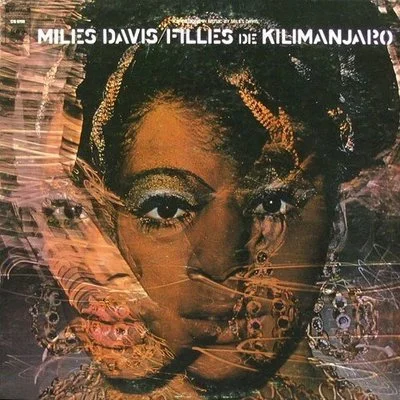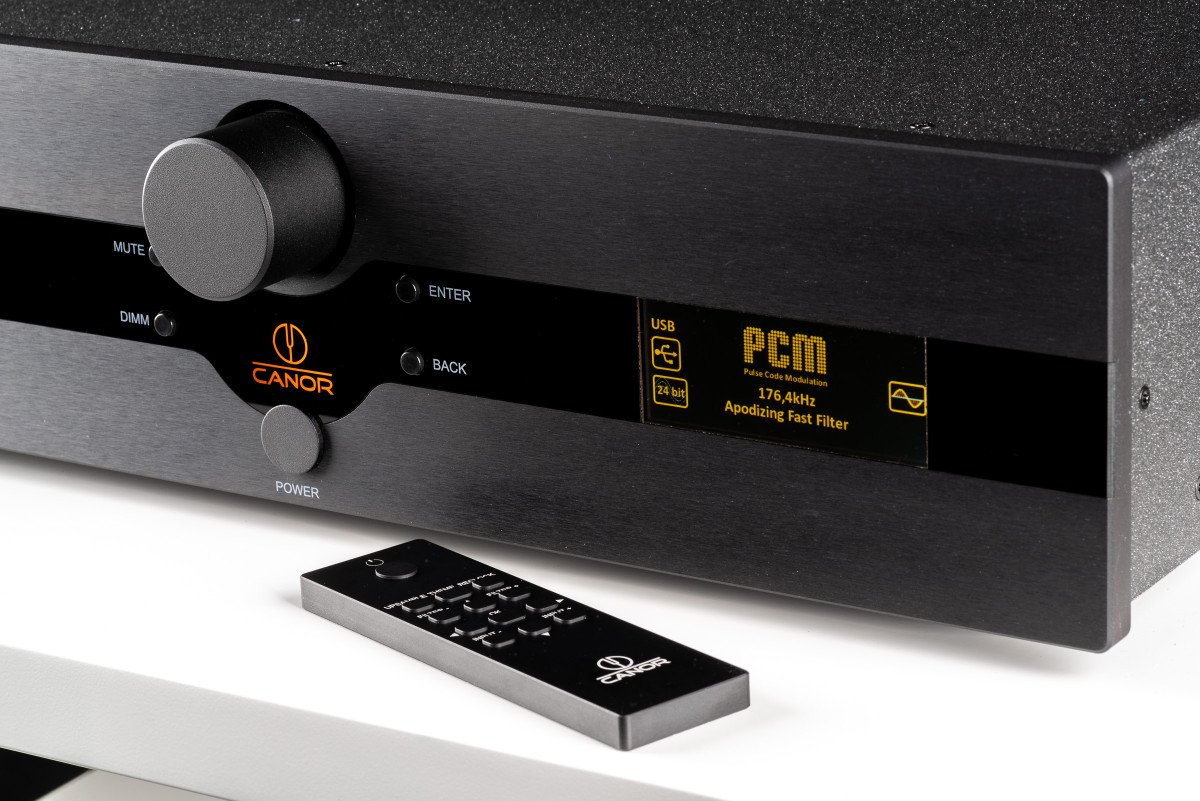CANOR DAC 2.10 - REVIEW
CANOR DAC 2.10 - REVIEW
Canor, based in Slovakia, produces high-end tube gear with modern performance goals, especially with their tube-based source components. Along with a CD player and phono preamplifier, they have caught the attention of audiophiles with their DAC 2.10. Canor also makes reference-level tube amplifiers and preamplifiers. Canor products are built in the European Union.
Most interestingly, Canor designs their own circuit boards with what they call CMT, or Canor PCB milling technology. According to the company, this allows them to control many variables and to ensure the highest quality of components. They also use their own in-house-made measuring devices to guarantee consistent quality.
The DAC 2.10 is a dual mono design using ESS Sabre DAC chips, and decodes all PCM formats, as well as DSD via USB. There are several other digital inputs and no fewer than seven digital filters to choose from. Optional oversampling is a very nice addition, and the secret sauce is the tube-based analog output stage. A big plus are the fully balanced XLR outputs, along with single-ended RCA outputs.
The DAC 2.10 looks and feels like a luxury component, and is built with tremendous precision based on visual inspection and use over time. The unit weighs 25 pounds (11.3 kg) due to the beefy power supplies and solid casework. Inside the chassis sit four double triode 6922EH tubes, running in dual mono configuration. The DAC 2.10 employs a large power transformer that is well isolated and treated with an anti-vibration compound. Electromagnetic shielding is used throughout to reduce component interaction and any RFI/EMI.
The DAC has a very easy to navigate menu system for selecting filters, input, and oversampling. The display can be tailored to the user’s preference as well. The unit also comes supplied with a small but well laid-out metal remote that can be used to change menu parameters—a nice touch. The DAC 2.10 is offered in a silver or matte black finish. Our review sample arrived in matte black.
Setup and listening
We dropped the Canor DAC into the heart of a very impressive system consisting of Alnic’s new L-10,0000 Signature Edition tube linestage and their M-3000 Mk3 tube mono block amplifiers. Speakers were Magnepan 3.7i and cabling was Clarus all around. Everything was powered by Audience and Bryston power conditioners.
The DAC 2.10 produces a sound that could be described as full-bodied, dimensional, and precise. There is no overbearing lushness from the tube output; it is quite neutral, with a pinch of natural harmonics that tubes produce. Regardless of the genre of music streamed through the DAC 2.10, the sonics were first-rate and very organic.
We got a very good sense of the main strength of the DAC 2.10, namely dimensionality, making the music seem to have weight and depth. The was especially true listening to a slew of Miles Davis’s late 1960s recordings, ground-breaking albums including Miles in the Sky and Filles de Kilimanjaro.
This was the first series of recordings where Davis incorporated amplified instruments in the form of Herbie Hancock’s Fender Rhodes electric piano, along with Ron Carter on electric bass and George Benson on electric guitar. He would dive head-first into electric music later with In a Silent Way and Bitches Brew.
The music on these two albums was well recorded at Columbia Studios, presenting a fascinating portrait of an artist beginning to push the boundaries of jazz. The Canor DAC made the 24-bit 192 Khz remasters, from the original tapes, sound as avant-garde and game-changing as they were more than 55 years ago. Davis’ trumpet and Wayne Shorter’s sax dance throughout, and it was easy to hear the distinct location in the mix of each, along with Hancock’s elegant phrasing. This was an experience.
The DAC 2.10 seems especially adept at dynamics and imaging. Listening to classical music, crescendos, and percussive elements was quite breathtaking. A recording that showcases these attributes is the 88.2 Khz Reference Recordings production of Eiji Oue conducting the Minnesota Orchestra in a run-through of Stravinsky’s The Song of the Nightingale, The Firebird, and The Rite of Spring.
The power and sheer weight of these performances was stunning, The DAC 2.10 made us lose sight of all things analog or digital and made items like sample rate secondary, as the music took centre stage in its presence and palpable dimensionality. It’s hard to believe that when first performed, some of these pieces actually caused audiences to riot.
Staying with music filled with power and dynamics, we switched over to a classic album out of the Seattle 90s scene, Above, by Mad Season. The lineup is a true super group, featuring Mike McCready of Pearl Jam, Layne Staley of Alice in Chains, and Mark Lanegan and Barrett Martin of Screaming Trees. The heavy psychedelic grunge jams exploded out of the speakers, and the DAC 2.10 made the late Staley’s clarion call vocals seem to emerge from the mist.
But for us, it was the ballads that made the hair on the back of our necks stand up. The lead track, “Wake Up,” is a harrowing tale of addiction, with McCready pulling Hendrix guitar lines out of his soul and Staley pleading for deliverance. The DAC 2.10 also dug deep into this performance, spotlighting the incredibly sympathetic production by Brett Eliason.
Eliason gives the band a lot of breathing space and the album flows perfectly in the chosen sequence. “Long Gone Day,” another ballad featuring Staley and Lanegan on co-lead vocals, induces goosebumps, and the DAC 2.10 makes the marimba, cello, and bass lines tonally shine, with superb texture.
Now a small confession: we have had numerous tube DACs in our system for review, and all were high-fidelity decoders, but they strayed too far from neutral for long-term enjoyment. Specifically, there was too much warmth, too much tube noise, and they ran too warm. The Canor DAC 2.10 shares none of these attributes. It was ultra transparent, noise-free, and did not double as a space heater, although decent ventilation is still common sense.
After experimenting with the digital filters, we settled on Liner Phase Slow and Apodizing Fast. None of the filters sounded disagreeable, but those two seemed to be the most consistent across various genres of music. We also left the Upsampling engaged throughout, which we felt added increased textural depth.
Conclusion
The Slovakian brand Canor has made its presence known over the past several years, and the DAC 2.10 is a world-class source component, regardless of topology. But the fact that Canor pays fanatical attention to detail, even designing their own boards, and has found a way to incorporate a flawless tube output stage with their digital design, makes the DAC 2.10 a unique and highly desirable digital source component.
Product information
Canor DAC 2.10
Retail: $3,995
Canor Audio
Product SPECIFICATIONS
Analogue outputs 2 x XLR / 2 x RCA
Supported PCM sampling rates 44,1k / 48k / 88,2k / 96k / 176,4k / 192k / 352,8k / 384k / 705,6k / 768kHz
DSD over PCM support DoP DSD 64/128/256/512
DSD Native support Native DSD 64/128/256/512
S/PDIF Optical input 2 x (24bit / 192kHz)
S/PDIF Coaxial input 1 x (24bit / 192kHz)
AES/EBU input 1 x (24bit / 192kHz balanced)
Digital to Analogue converter 2 x ESS9038Q2M (dual mono)
Filter settings 7 x digital filter
Weight (net) 12 kg








